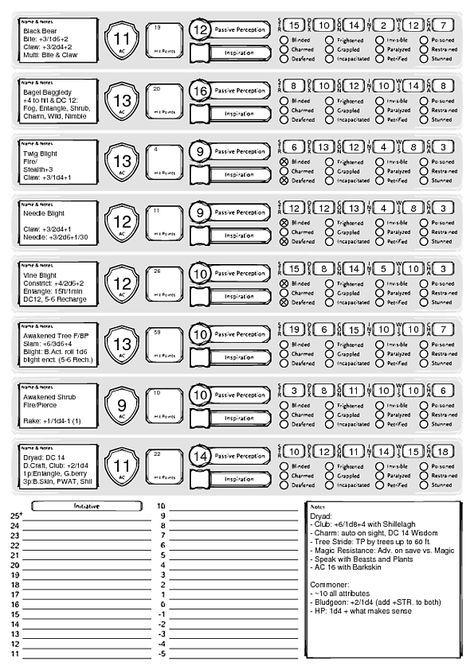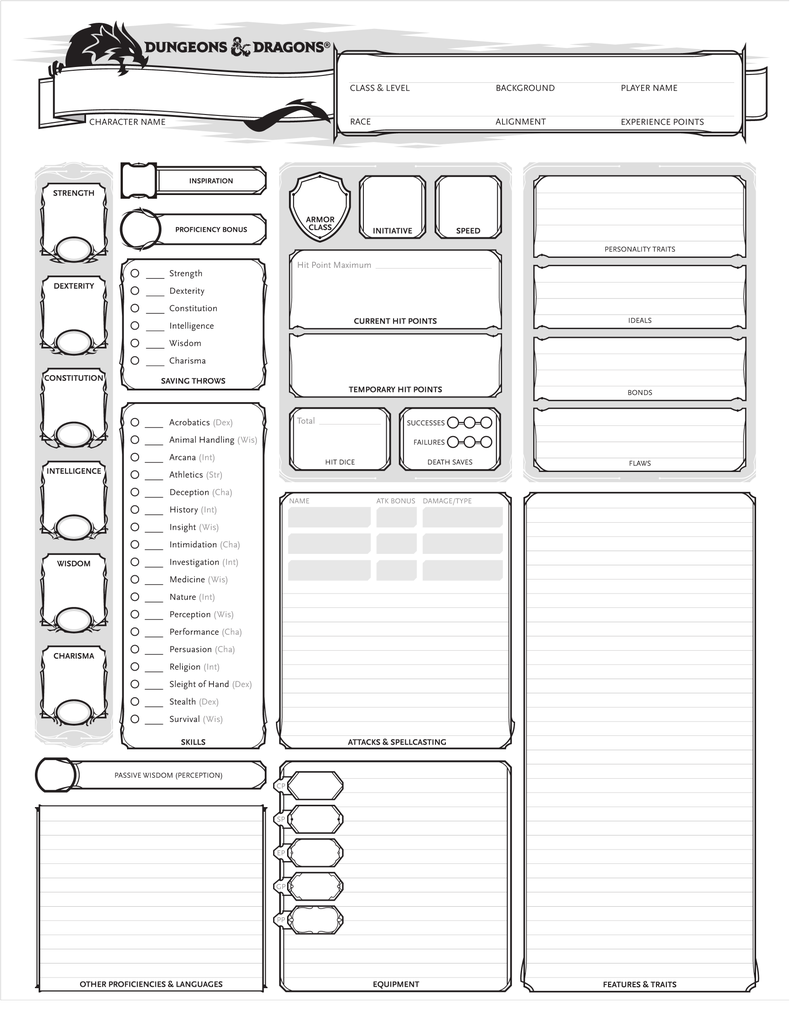The question: “How much treasure to give your players?” is ridiculously difficult. Ink has been spilled, keys have been typed, and dozens of dungeons masters have wrung their hands over this problem. In short, characters seem to get a lot of gold, get it faster than they should, have nothing to spend it on, and we don’t know how much we should change it (Editor’s Note: the player editor would like to point out that I have literally never felt this way in any of the campaigns DM’d by the author).
The problem breaks down to the following issues:
Characters don’t have anything to buy
Well balanced parties can defeat higher CR creatures, earning money faster than anticipated
The cash players earn (particularly at higher levels) appears obscene.
There is no guidance on the consequences of changing treasure rewards.
Let’s break these problems down one by one.
- Dmg 5e Class Wealth Level Death Cleric Dmg Page Number Advanced Mass Sender Download Dmg Maplestory 2 Gms Dmg Lit Download Os X Dmg Without Apple Store Pro Players That Are Dmg How Can I Will Convert Dmg To Rar Dmg File Not Opening Mac Sierra Site Forums.developer.apple.com Skyrin Ibflect Dmg On Urself.
- 5E Starting Gold by Level – Levels 2+ Al though the rules are much different if you would like to intend to start a campaign by the characters above 1st level. During 3.5 provided the helpful chart which has usually provided the starting gold based upon your character’s level, the 5th edition of the player’s handbook does not.
Apr 09, 2016 Expected Wealth By Level. Is a Starting equipment at higher level table on page 38 of the DMG just so you don't waste time. If I know my mid.
The characters don’t have anything to buy
In some older editions and Pathfinder, the primary way to burn through cash is to buy magic items. However, the advice provided in the 5e Dungeon Master’s Guide (DMG) simply states that “most magic items are so rare that they aren’t available for purchase.” Thus, once the party accumulates enough coin to buy plate mail for the plucky fighter (probably around level 4) then there isn’t much gear left to purchase. If our heroes wanted to buy a nice ship or build a castle, they likely could accumulate that much cash by level 9. However, after that, the treasure the party finds doesn’t necessarily purchase anything new. The party has become the 1%, constantly upgrading their mansions and hoarding unspendable amounts of wealth.
The easiest way to solve this problem is to have some market for magical items. Single-use items are a great way to drain the party’s bank account, give them an edge in combat, and still keep them from becoming overpowered. The players also get to feel clever when they buy the right item for the right encounter. It is also a chance to develop fun NPCs as your charming local chemist, alchemist, or priest can sell potions, grenades, or spell scrolls to a party in need.

You could also create a small market for permanent magical items. This easily soaks up the cash that characters earn throughout a campaign until they are level 15 or so. Xanathar’s Guide has official rules and prices that work well. Remember, you do not have to have a wide-open magic item market, just the occasional item that the players may want. Plus, these magic markets don’t necessarily have to be 100% reliable. Maybe it takes a week or two and additional costs to find a seller, you can’t always get what you want, or there is always the option of some fraud.
Furthermore, if you are worried about overpowered characters, just keep track of which permanent items characters buy and remove comparable items from your random treasure rolls. Xanathar’s Guide has a chart on page 135 with what a party should earn throughout a campaign, and that allows you to easily track what the characters should have.
Characters punch above level.
Now that we have given our players something to spend their money on, let’s take a look at how characters earn treasure. The DMG awards treasure based on the CR of the monster defeated. This makes sense: the more powerful the monster, the more treasure it has (or the more local townspeople are willing to pay to make it go away).
Ideally, the CR of a monster should be at or below the party level. However, once parties get above 5th level, the DMs often need to use monsters with a CR well over the party level to challenge them. The exponential nature of the treasure tables means that when characters fight creatures above their tier, they can get access to more cash than they “should.”
Luckily, someone has already recalculated what CR of creatures the characters should be facing. You can find quick matchup charts based on those new numbers here. This information allows us to adjust the treasure tables to increase the difficulty of getting that sweet sweet loot.
You might be curious: if you use the treasure tables in the 5e DMG, how rich will the characters be? This becomes important if you want to do things like give characters XP for GP found.
Here’s the breakdown: for each tier (a band of 4-6 levels) I’ve written a script which presents the average monetary treasure and provides a sample roll on the treasure table. (I’m using ~ as shorthand for “on average” here.)
Higher Level Ri
What we see here is that, for each tier, average hoard value is multiplied by 10. At first glance, this seems like a problem. This is not granular at all, and treasure values don’t change for 6 levels at a time?? A closer look reveals that it might work quite well. The treasure quantity is tied to the monster’s level, not the PC’s level. If PCs take on monsters of varying but surmountable difficulties, they will naturally fight steadily increasing numbers of higher-tier monsters as they level up. For instance, if you imagine a group who fights monsters of their level +1d6-2, these big steps turn naturally into a nice curve. Not only it is a smooth average, it’s one with extremely varied rewards. That means that there’s lots of the “wow! I’m rich!” moments that make slot machines so popular.
Knowing how much money characters are “expected” to earn helps us gauge a lot of things about the economy. For me, the most important questions are a) when can characters afford domains? and b) can I give out 1 XP per 1 GP and ignore monster XP?

When will the players be afford to buy castles? Because of 1e tradition, I want people to be able to afford domains at around level 10, so I might price them at a few tens of thousands of GP. At that price, a tenth-level party, which will probably have picked up a few third-tier hoards, will be able to start affording them.

What about 1 GP = 1 XP? There’s no rules for that in the DMG, and you want to have some way to match GP to XP to figure out how long it will take to level. At straight GP to XP, are we looking at a full campaign taking, like, a few weeks or a few decades?
Well, according to the “standard” expectations of treasure hordes found per career, a 20th-level party will have discovered about 3 million GP, at a rate of about 3 treasure hordes per character level. It takes 255,000 XP to get to level 20, so that hoard is enough for about 8 characters to get to level 20. That means that, at level 20, GP=XP is in the right ballpark, but a little high.
How does 1 GP=1 XP fare at lower levels? It takes 300 XP to get to level 2, which means that the party has to find 1 tier-1 treasure hoard per character. That will take a while, considering that level 1 is supposed to be a training level. Tier-one treasures will generally net about 100 XP for each character in a four-person party, which makes advancement pretty slow. Tier-two treasures (monster level 5+) provide 1000 XP each, and become necessary for advancement at around character level 3. Tier-three treasures (monster level 11+) provide 10k XP each, and characters of level 6+ really need one or more tier-three treasure in order to advance in level. High-level characters need four or five such finds, which means that high levels take a lot more time to accrue. No one needs a tier-4 treasure (level 17+): its 100k XP would take a party of 17th-level characters to level 20 in one shot (assuming you could gain more than 1 level per treasure).
In short, the treasure expectations almost-but-not-quite work for 1XP=1GP. For that trick, the treasure finds really do need to be a little more regular. Here’s the fix I propose:

Whenever a monster is in the top half of a tier (levels 3-4, 8-10, 14-16) double the monetary treasure. This eases the speed bumps that slow down character advancement at certain points.
5e Dmg Higher Level Wealth Chart
Ignore tier-four treasures. A steady diet of doubled tier-three treasures will allow high-level characters to advance after every two hoards (or once after a dragon hoard). A tier-four treasure of 300,000 GP might be fun but it is not necessary for character advancement.